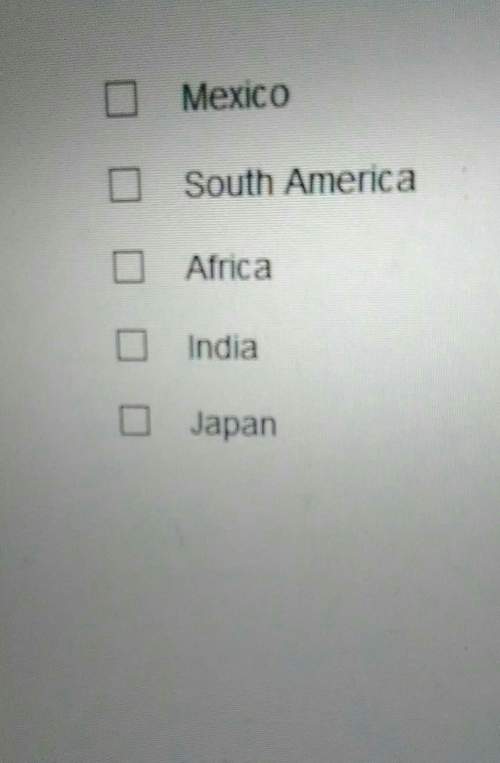13.
the executive office of the president is a bureaucracy. how do formalized rules benefit s...

13.
the executive office of the president is a bureaucracy. how do formalized rules benefit such a bureaucracy?
a. workers can act with speed and precision because decisions are based on a set of known standards.
b. formalized rules a bureaucracy to attract new workers.
c. formalized rules provide a healthy corrective for job specialization.
d. workers at the top end of a hierarchical authority do not have to obey formalized rules.
"the citizens of the united states cherish sentiments the most friendly in favor of the liberty and happiness of their fellow man on that side of the atlantic [europe]. in the wars of the european powers in matters relating to themselves we have never taken any part, nor does it comport with our policy so to do. . we owe it, therefore, to candor and to the amicable relations existing between the united states and those powers to declare that we should consider any attempt on their part to extend their system to any portion of this hemisphere as dangerous to our peace and safety."
—president james monroe, message to congress, december 2, 1823
14.
in this message, james monroe promoted a foreign policy that would become known by which of the following names?
a. interventionism
b. selective foreign aid
c. free trade
d. isolationism
15.
which of the following became a valid criticism of the electoral college system after the 2000 bush v. gore presidential elections?
a. the election had to be decided in the senate.
b. the winner of the popular vote was not guaranteed the presidency.
c. the election was too close to be decided on the day people voted.
d. the winner of the electoral vote was not guaranteed the presidency.
"to what expedient, then, shall we finally resort, for maintaining in practice the necessary partition of power among the several departments, as laid down in the constitution? the only answer that can be given is, that as all these exterior provisions are found to be inadequate, the defect must be supplied, by so contriving the interior structure of the government as that its several constituent parts may, by their mutual relations, be the means of keeping each other in their proper places."
use the passage to answer the question.
16.
what is the main purpose of this excerpt from the federalist no. 51, and which of the following best illustrates it?
a. to outline the powers of the executive branch; the president signs a treaty
b. to outline the powers of the legislative branch; congress changes the date of an election
c. to outline the system of checks and balances among the three branches; the supreme court declares a law unconstitutional
d. to outline the system of checks and balances among the three branches; the president announces that he will run for a third term

Answers: 2


Other questions on the subject: History



History, 22.06.2019 02:00, sugandiwoodbine
When and why did the united states enter world war 2
Answers: 2

History, 22.06.2019 05:00, Ary10113
Plz me asap. upon arrival of european powers on american soil, a quick end came to many native populations. numbers were devastated the longer europeans were present. many empires such as the aztec and inca were taken by force. the natives’ weapons of arrows and rocks were no match for gunpowder, steel swords, and horses. yet even after hostile takeovers, the native americans continued to suffer in numerous ways. according to las casas, the harshness of the encomienda system took many native lives. examples of such harshness included beatings by colonists and exhaustion caused by never-ending labor. natives were forced into slave labor in order to process colonists’ crops such as sugar cane and tobacco. these crops were referred to as “cash crops”. cash crops are crops grown not for sustenance but because they are extremely profitable. the colonies would have natives tend to these crops and they would then be exported to other european nations for high prices in order to make manufactured or processed goods. native slaves were worked for long hours in extremely hot temperatures with very little food, water, or breaks. they suffered savage beatings for working too slow and some were killed for refusal to work due to their exhaustion. poor health is another struggle natives faced upon european colonization. many natives died from hunger once colonists started to take their land. colonists’ cattle trampled native crops such as corn and squash. but possibly the most devastating factor in declining native populations were the diseases brought by europeans and against which the native people had no immunity. these included smallpox, typhus, chicken pox, mumps, and measles. hundreds upon thousands of natives fell to such diseases. entire villages were wiped out in mere days of the first symptom. native cities throughout the americas became desolate from the fast spread of disease. native american empires such as the aztec and the inca fell to the spanish and portuguese in the 1500s. the aztec alone had between sixteen and eighteen million people under their rule before europeans landed on the continent. why were these empires unable to fight the inevitable take over of european powers? use evidence from the text to support your answer.
Answers: 2
You know the right answer?
Questions in other subjects:

English, 20.10.2020 03:01

Mathematics, 20.10.2020 03:01

Chemistry, 20.10.2020 03:01



Chemistry, 20.10.2020 03:01



Mathematics, 20.10.2020 03:01

Mathematics, 20.10.2020 03:01




